This pub is the former Ritz cinema. Billed as a super cinema for Lincoln, it opened in 1932 and screened its last film six decades later.
Text about the Lincolnshire handicap.
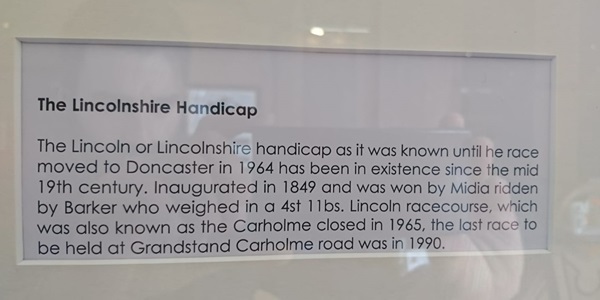
The text reads: The Lincoln or Lincolnshire handicap as it was known until the race moved to Doncaster in 1964 has been in existence since the mid 19th century. Inaugurated in 1849 and was won by Midia ridden by Barker who weighed in a 4st 11bs. Lincoln racecourse, which was also known as the Carholme closed in 1965, the last race to be held at Grandstand Carholme road was in 1990.
Photographs and text about Tankers-William Fosters & co.
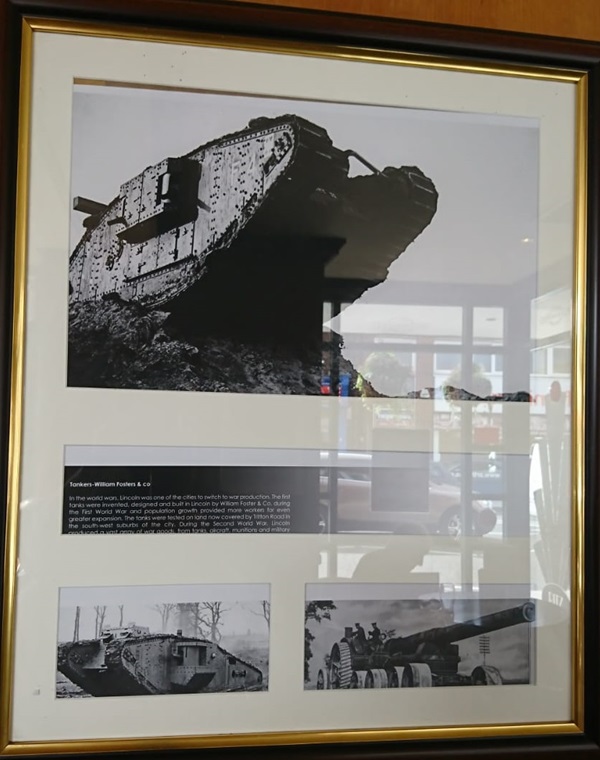
The text reads: In the world wars, Lincoln was one of the cities to switch to war production. The first tanks were invented, designed and built by Lincoln by William Foster & Co, during the First World War and population growth provided more workers for even greater expansion. The tanks were tested on land now covered by Tritton Road in the south-west suburbs of the city. During the Second World War, Lincoln produced a vast array of war goods, from tanks, aircraft and munitions.
Text about the richest man in England in the 12th century.
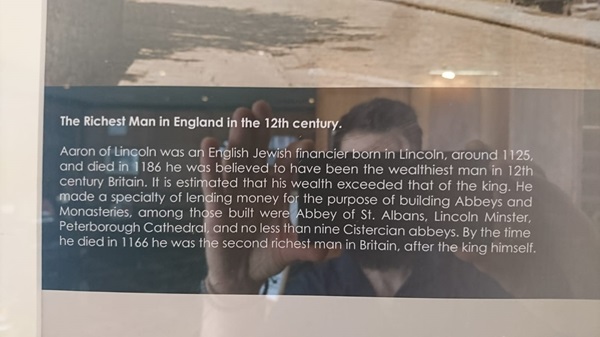
The text reads: Aaron of Lincoln was an English Jewish financier born in Lincoln, around 1125 and died in 1186 he was believed to have been the wealthiest man in 12th century Britain. It is estimated that his wealth exceeded that of the king. He made a speciality of lending money for the purpose of building abbeys and monasteries, among those built were Abbey of St Albans, Lincoln Minster, Peterborough Cathedral, and no less than nine Cistercian abbeys. By the time he died in 1166 he was the second richest man in Britain, after the king himself.
A print and text about John Wesley.

The text reads: John Wesley was born in June 1703 and was the fifteenth child of Samuel Wesley, a clergyman from Epworth in Lincolnshire. Wesley is credited with the birth of the Methodist Church in England but many people refuted Wesley and his new religion to the extent that when John Wesley returned to Lincolnshire in 1742 he asked the Rector of St Andrews Church if he could preach in the Church of his father. The Rector refused to allow Wesley in the pulpit because John already had a reputation as a troublemaker. Wesley’s response was “I will preach on private land” the nearest of which was six feet from the wall of the church and was his father’s grave that he owned.
Illustrations and text about Edward King, Bishop of Lincoln.
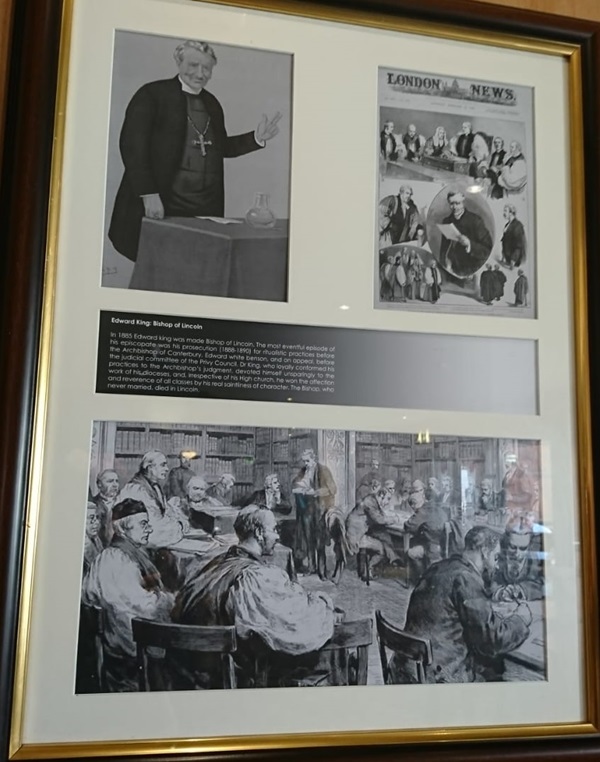
The text reads: In 1885 Edward King was made Bishop of Lincoln. The most eventful episode of his episcopate was his prosecution (1888-90) for ritualistic practices before the Archbishop of Canterbury, Edward White Benson, and on appeal, before the judicial committee of the Privy Council. Dr King, who loyally conformed his practices to the Archbishop’s judgement, devoted himself unsparingly to the work of his dioceses, and irrespective of his High Church, he won the affection and reverence of all classes by his real saintliness of character. The Bishop, who never married, died in Lincoln.
An illustration and text about Isaac Newton.
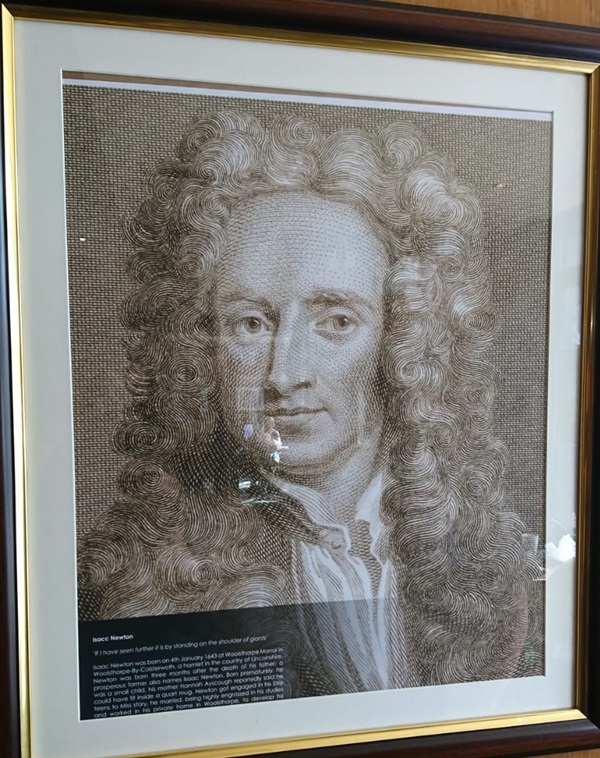
The text reads: ‘If I have seen further it is by standing on the shoulder of giants’.
Isaac Newton was born on 4 January 1643 at Woolsthorpe Manor in Woolsthorpe-by-Colsterwoth, a hamlet in the country of Lincolnshire, Newton was born three months after the death of his feather; a prosperous farmer also named Isaac Newton. Born prematurely, he was a small child, his mother Hannah Ayscough reportedly said he could have fit inside a quart mug. Newton got engaged in his late teens to Miss Story, he married, being highly engrossed in his studies and worked in his private home in Woolsthorpe.
Prints and text about Saint Hugh of Lincoln.
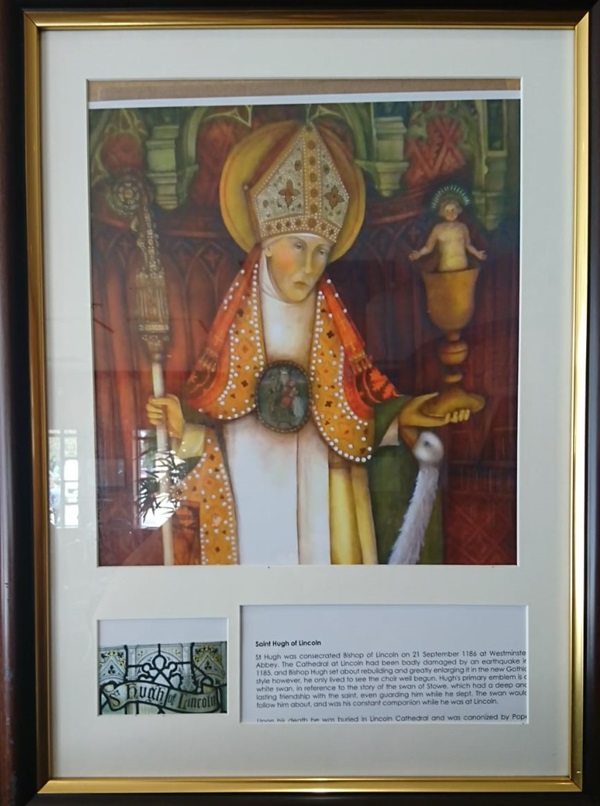
The text reads: St Hugh was consecrated Bishop of Lincoln on 21 September 1186 at Westminster Abbey. The cathedral at Lincoln had been badly damaged by an earthquake in 1185, and Bishop Hugh set about rebuilding and greatly enlarging it in the new Gothic style, however, he only lived to see the choir well begun. Hugh’s primary emblem is a white swan, in reference to the story of the swan of Stowe, which had a deep and lasting friendship with the saint, even guarding him while he slept. The swan would follow him about, and was his constant companion while he was at Lincoln.
Prints and text about the Roman influence in Lincoln.
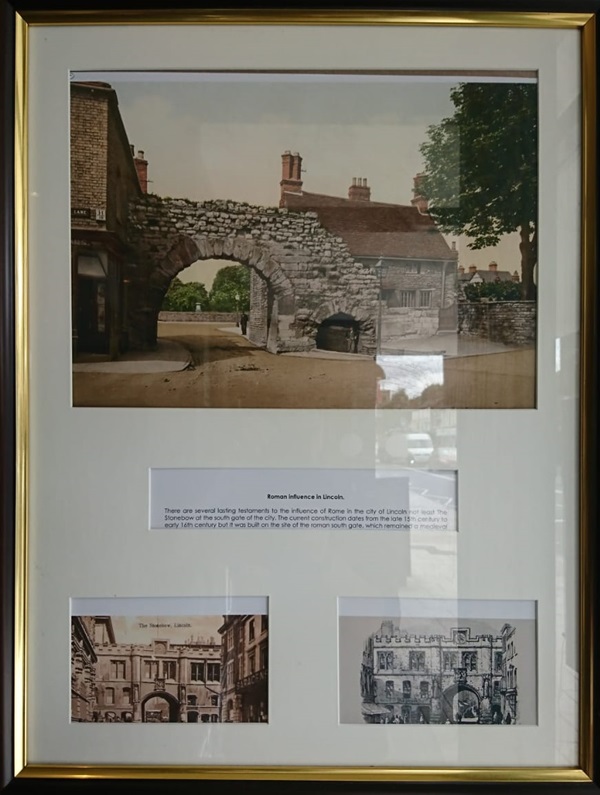
The text reads: There are several lasting testaments to the influence of Rome in the city if Lincoln not least The Stonebow at the south gate of the city. The current construction dates from the late 15th century to early 16th century but it was built on the site of the roman south gate.
A copy of stage show appearances at The Ritz in 1986.
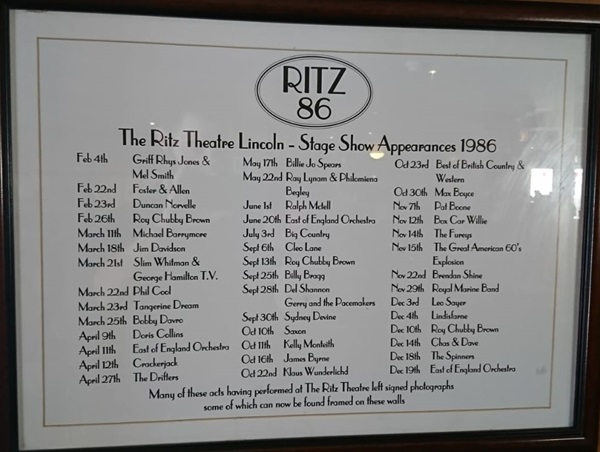
Various headshots of famous people who appeared at The Ritz.

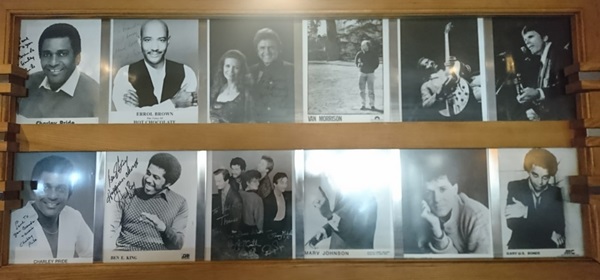
External photograph of the building – main entrance.
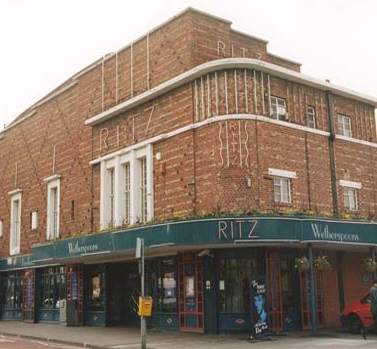
If you have information on the history of this pub, then we’d like you to share it with us. Please e-mail all information to: pubhistories@jdwetherspoon.co.uk